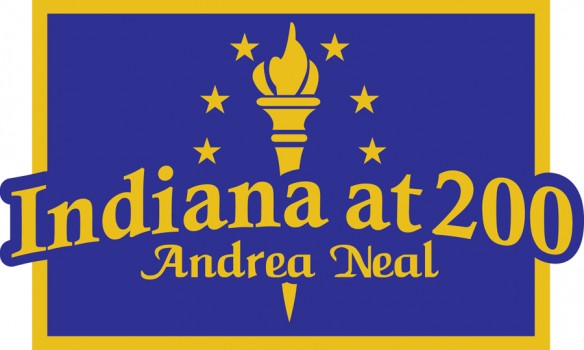Indiana At 200 — T.C. Steele, Hoosier Artist
He was educated in Europe and trained to emulate the brushstrokes of the Great Masters, yet Theodore Clement Steele’s greatest gift was in depicting and interpreting the Indiana countryside.
T.C. Steele — Indiana’s most famous painter — was born in Gosport in 1847, raised in Waveland and died at his “House of the Singing Winds” in rural Brown County in 1926. He loved Indiana, and Indiana still loves him. His paintings sell for upwards of $25,000.
“It boils down to the images,” says art dealer Jim Ross of Eckert & Ross Fine Art of Indianapolis. “He painted local subjects and scenes in an agreeable impressionistic style that has wide appeal to Hoosiers.”
Steele was the lead character in the Hoosier Group, five acclaimed painters of the late 19th and early 20th centuries who studied abroad to hone their skills and returned to Indiana to paint scenes “en plein air” – in open air. The others were J. Ottis Adams, William Forsyth, Otto Stark and Richard Gruelle.
The group received its name in 1894 from Chicago art critic Hamlin Garland, who saw their pictures at an exhibition at the Indianapolis Denison Hotel. A month later Chicago hosted the same exhibit, which introduced the artists to a national audience.
 The five earned their reputations the old-fashioned way – through study, practice and hard work. “Because of Steele and the others, Indiana enjoys today one of the top regional art histories in the entire country,” Ross notes.
The five earned their reputations the old-fashioned way – through study, practice and hard work. “Because of Steele and the others, Indiana enjoys today one of the top regional art histories in the entire country,” Ross notes.
Steele was a student at the Waveland Institute, a preparatory school near Crawfordsville, when he received his first formal instruction in art. By 13, he was giving fellow students lessons. By 16, he was painting portraits; he received his first commissions in 1869.
In his 1870 diary, Steele pledged to dedicate his life to art. He wrote, “The two great qualities that an artist must possess, and that are essentially necessary to all who pass the point of mediocrity, are first an innate and deep love of the beautiful. Secondly, mechanical skill.”
His expertise came during five years at the Royal Academy in Munich, an education financed by 13 Indianapolis art patrons in exchange for “paintings from his own easel as soon as practicable after his return from abroad.” When not in the classroom, Steele spent hours in museums copying paintings by Rembrandt, Rubens and Titian; and visiting art galleries with his wife, Libbie, and their three children.
In 1885, the family returned to Indianapolis where Steele opened an art school and painted portraits, his primary source of income. His true love was the Indiana countryside and the challenge of capturing light and color of the four seasons.
After his wife’s death in 1899, Steele poured himself into his landscapes. He bought 211 wooded acres in Brown County, remarried and built a pyramid-roofed cottage and studio that overlooked a picturesque valley. It was dubbed “The House of the Singing Winds” due to breezes blowing through the screened porches. Other artists followed him to Brown County, and an artist’s colony developed around Nashville, which continues to this day.
Steele’s last home and studio are preserved as a state historic site, and guided tours are available year round. More than 50 of his paintings are on display, and visitors are encouraged to enjoy the site’s gardens and hiking trails.
Directions: The T.C. Steele State Historic Site is at 4220 T C Steele Road, Nashville.
EDITORS NOTE: This is a series of essays leading up to the celebration of the Indiana Bicentennial In December 2016. The essays focus on the top 100 events, ideas and historical figures of Indiana, in chronological order, tying each to a place or current event in Indiana that continues to tell the story of the state.
Andrea Neal is a teacher at St. Richard’s Episcopal School in Indianapolis and adjunct scholar with the Indiana Policy Review Foundation. She has written extensively about taxes, good governance, higher education, civic education and K-12 reform. Contact her at [email protected].
Indiana Policy Review Foundation is a non-profit education foundation focused on state and municipal issues.


